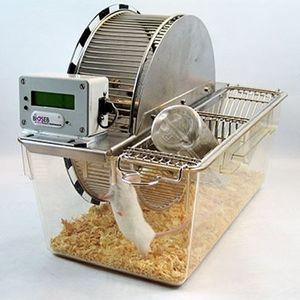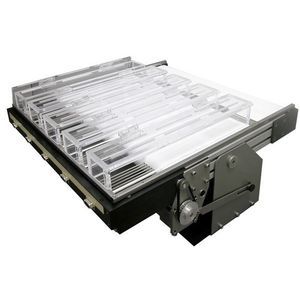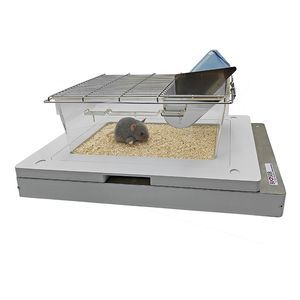
Animal research rotameter LE902BT
Add to favorites
Compare this product
Characteristics
- Applications
- for animal research
Description
Popular technique for screening the behavioural effects of a wide variety of lesions, drugs,
and other experimental manipulations on the brain of rodents
Presentation
Rotational behaviour has proved a popular technique for screening the behavioural effects of a wide variety of lesions, drugs, and other experimental manipulations on the brain of rodents. This test is widely carried out in experiments using animal models of Parkinson disease with unilateral lesions in the dopaminergic nigrostriatal system.
Operating principle
Basically, the subject wears an adjustable harness with Velcro connected to the rotation sensor by a flexible tie. Wide ranges of harnesses are available to fit different animal sizes. The subject is then placed into a transparent container (cylinder or bowl) with a lateral support for a vertical stand.
A bi-directional rotation sensor provides a double (right and left turns) output with adjustable regulation of pulses/turns (between 4 and 36 pulses per complete turn). Two configurations are available for rotation counting: individual counter or a multicounter.
When using a multicounter, the new SEDACOM 2.0 version provides an easy and convenient way to visualize and export the data on a computer for further analysis.
Parameters Measured
• Number of partial and complete left and right turns
• Data given by user-defined intervals of time (Multicounter LE3806)
Key features
• Cylinder or Bowl transparent containers
• Rotation sensor with adjustable TTL output signal
• Configuring experiment duration and time intervals of counting
• Counting the number of partial and complete left and right turns
• Easily adjustable harness (new design)
Catalogs
No catalogs are available for this product.
See all of Bioseb‘s catalogs*Prices are pre-tax. They exclude delivery charges and customs duties and do not include additional charges for installation or activation options. Prices are indicative only and may vary by country, with changes to the cost of raw materials and exchange rates.













